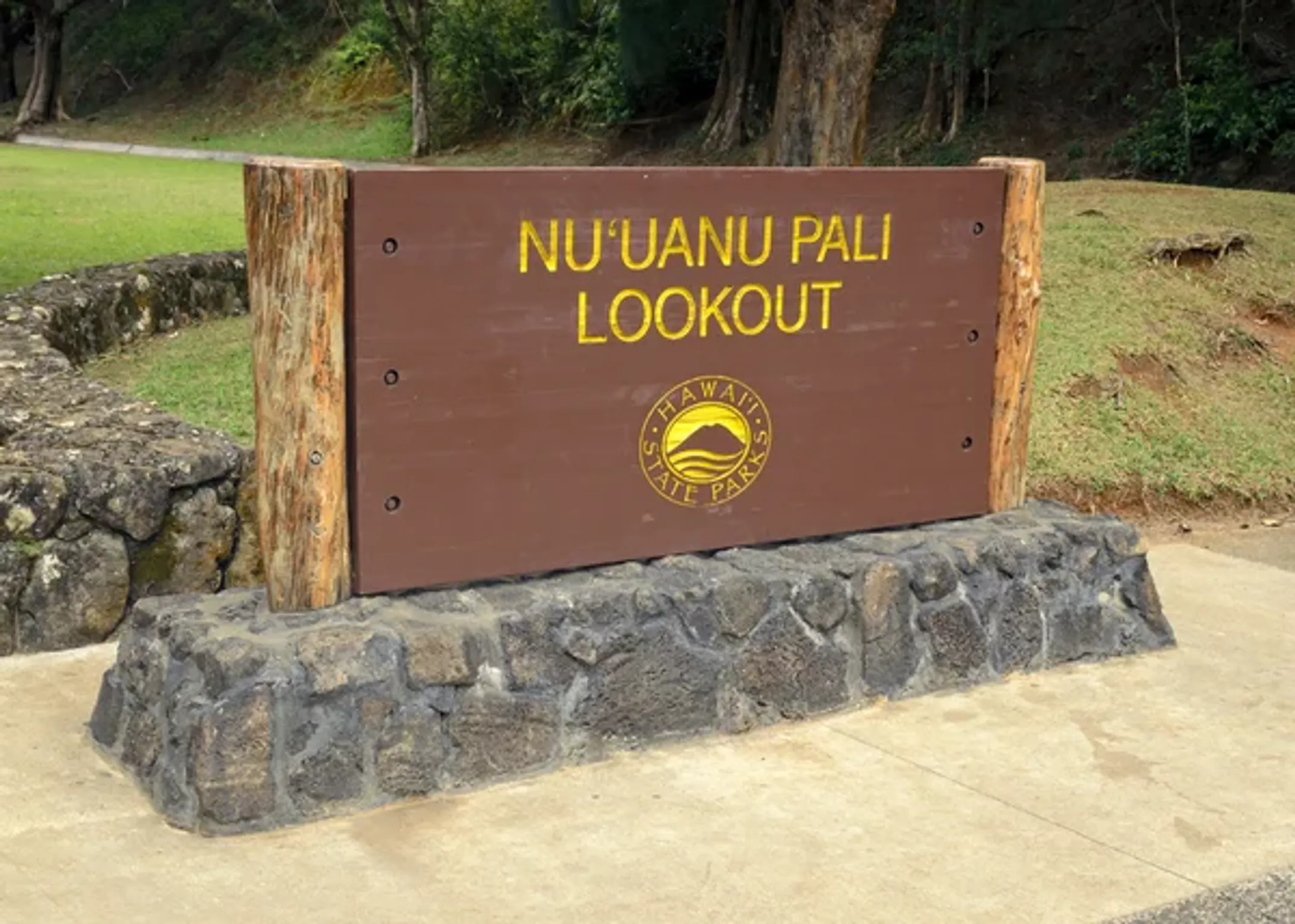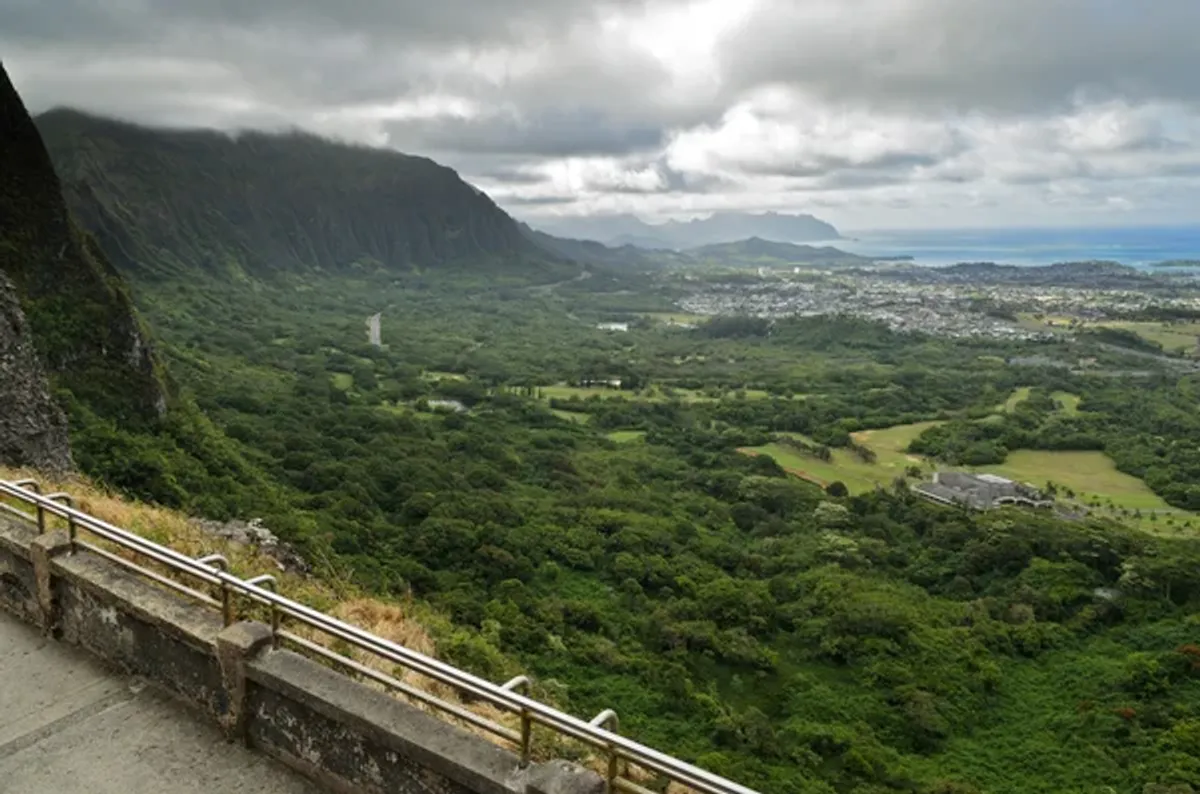

History & Legends of the Pali
Where Ancient Battles and Sacred Stories Shape Hawaiian Heritage

Written by a Local Cultural Historian
Leilani AkoEchoes of the Past: The Battle of Nuʻuanu
In May 1795, the serene beauty of Nuʻuanu Valley became the stage for one of the most pivotal conflicts in Hawaiian history. The Battle of Nuʻuanu, known in Hawaiian as Kalelekaʻanae ("the leaping mullet"), was the decisive engagement in King Kamehameha I's campaign to unite the Hawaiian Islands.
The Prelude to War
Having consolidated power over Hawaiʻi Island, Maui, Molokaʻi, and Lānaʻi, Kamehameha set his sights on O'ahu. The island was controlled by Kalanikūpule, son of his deceased rival Kahekili II.
Kamehameha assembled an unprecedented force of 10,000 to 16,000 warriors. His army carried modern Western weapons including muskets and cannons, transported by about 1,200 war canoes. Foreign advisors like John Young trained his forces. They landed on O'ahu's southeastern shores near Waiʻalae and Waikīkī.
Mark Twain, visiting Waikīkī in 1866, described finding "bleached bones of men" on the beach. Historians believe these were remnants from this initial invasion phase, a haunting reminder of the battle's scale.
The Final Stand at the Pali

Kalanikūpule prepared O'ahu's defenses with help from chief Kaʻiana, who had defected from Kamehameha's ranks. The first clashes occurred near Punchbowl Crater and Lāʻimi. Kamehameha's strategic skills and superior firepower proved overwhelming. He used flanking moves and dragged cannons on wooden sleds across terrain to shell the O'ahu forces.
During one engagement, Kaʻiana was killed and Kalanikūpule wounded. This threw the O'ahu warriors into chaos. The retreating forces were driven north through Nuʻuanu Valley. Their escape route narrowed toward the formidable Pali cliffs.
Here, trapped between Kamehameha's advancing army and a sheer 1,000-foot drop, the battle reached its tragic end. Hundreds of O'ahu warriors, along with some families, were either forced over the cliff or chose to jump rather than surrender. The scale of this loss became clear in 1898 when workers building the Old Pali Road found about 800 human skulls at the cliff base.
A Moment of Reflection: While Kamehameha's victory was decisive in conquering O'ahu, we must remember that historical accounts come mainly from the victors. The stories of the O'ahu defenders—those who fought to protect their homeland—are largely lost to time.
⚔️ Battle Facts
- Date: May 1795
- Hawaiian Name: Kalelekaʻanae
- Kamehameha's Force: 10,000-16,000
- War Canoes: ~1,200
- Skulls Found: ~800 (1898)
👑 Key Players
Conqueror & Unifier
O'ahu's Defender
Defector & General
Foreign Advisor
Whispers on the Wind: Myths and Legends of the Pali
The dramatic landscape and potent history of Nuʻuanu Pali have filled it with powerful spiritual energy. This makes it fertile ground for myths, legends, and ghostly tales that continue to capture imaginations of locals and visitors alike.
The Night Marchers - Huakaʻi Pō
Among the most well-known are tales of the Night Marchers, or Huakaʻi Pō. These are spirits of ancient Hawaiian warriors who, on certain nights, march in solemn procession. They retrace their battle-worn paths, often through the Nuʻuanu Pali area. They carry torches, chant, and are accompanied by drum sounds.
Legend says if you encounter the Night Marchers, you must lie face down in submission, averting your gaze, to avoid being taken into the spirit world.
The Pork Taboo: Pele and Kamapua'a
Another enduring story involves the powerful deities Pele, goddess of volcanoes, and Kamapuaʻa, the demigod who is part man, part pig. Their stormy relationship has created the warning against carrying pork over the Pali Highway, especially at night.
It's believed that Pele forbids Kamapuaʻa (symbolized by pork) from crossing into her domain on the windward side. Many locals claim that trying to transport pork across the Pali will cause your car to mysteriously stall until the offering is discarded.
Morgan's Corner: The nearby Morgan's Corner, along the winding Old Pali Road, has its own collection of eerie tales. The echoes of the Battle of Nuʻuanu itself, which raged through this area, are believed by some to have left spiritual remnants.
Sacred Guardians and Ancient Protectors
Other legends include the tale of a Ghost Dog, whose appearance signaled that travelers should turn back or risk not making it up the steep mountain. A moʻo wahine, a powerful lizard spirit capable of taking the form of a beautiful woman, is said to inhabit the pass, luring male travelers to their doom off the cliffs.
Two large stones near the back of Nuʻuanu Valley, named Hapuʻu and Ka-lae-hau-ola, were revered as representations of goddesses who served as guardians of the ancient passage down the pali.
👻 Night Marchers
Warrior spirits march in procession, retracing ancient battle paths through torchlight and chants.
🐷 Pork Taboo
Pele's prohibition against Kamapua'a crossing into her windward domain creates mysterious car troubles.
🦎 Mo'o Wahine
A shape-shifting lizard spirit takes the form of a beautiful woman to lure travelers off the cliffs.
🗿 Guardian Stones
Hapuʻu and Ka-lae-hau-ola serve as sacred protectors of the ancient passage.
The abundance of these stories shows the Pali's status as a place of immense spiritual significance and, perhaps, unresolved historical trauma. These narratives enrich the visitor experience, transforming the landscape from a purely visual spectacle into a place resonant with cultural meaning and mystery.
Sacred Slopes and Royal Retreats
While the Battle of Nuʻuanu dominates the narrative, the cultural and historical significance of Nuʻuanu Pali extends far beyond this single event. For centuries, this area has been a vital corridor, sacred space, and place of royal retreat.
Ancient Passage and Sacred Guardians
From ancient times, Nuʻuanu Pali served as a crucial passageway connecting the leeward (Honolulu) side of O'ahu with the fertile windward plains of Kailua and Kāneʻohe. This route was not merely physical convenience but was filled with spiritual importance.
According to tradition, two large stones near the back of Nuʻuanu Valley, known as Hapuʻu and Ka-lae-hau-ola, were revered as kupuna (demigods or supernatural beings) in the form of goddesses who acted as guardians of this passage. Their presence showed the sacred nature of the pathway and the respect with which travelers were expected to approach it.
Queen Emma Summer Palace
In the mid-19th century, the cool, green Nuʻuanu Valley became a favored retreat for Hawaiian royalty seeking escape from Honolulu's summer heat. Queen Emma Summer Palace, also known by its Hawaiian name Hānaiakamalama, stands today as a testament to this era.
Built in 1847, the home was initially owned by John Young II, Queen Emma's uncle and son of the famous British sailor John Young. The elder Young had been a key advisor to Kamehameha I and played an important role in the Battle of Nuʻuanu.
Queen Emma, wife of King Kamehameha IV, along with their son Prince Albert Edward, used Hānaiakamalama as their summer residence from 1857 to 1885. Today, the palace is a historic landmark and museum, housing Queen Emma's belongings and offering a glimpse into Hawaiian royal life.
Respectful Visiting
Given its deep historical and cultural meaning, visitors must approach Nuʻuanu Pali Lookout and its surroundings with respect. This site holds memories of those who lived, fought, and died here. Many locals continue to regard it as a place of significant spiritual power.
🌺 Cultural Respect
Stay on marked paths, keep voices low, and approach with reverence for this sacred place.
🏰 Royal History
Visit Queen Emma Summer Palace to understand how royalty connected with this valley's beauty.
⛩️ Sacred Passage
Ancient guardians and spiritual significance made this more than just a travel route.
Simple acts like staying on marked paths, keeping voices low, avoiding climbing on structures, and carefully removing all trash are essential ways to honor the land and its profound legacy. Taking a quiet moment to appreciate not just the view but also the layers of history and cultural meaning can transform a visit from simple sightseeing into a more meaningful engagement with Hawaiʻi's past.

